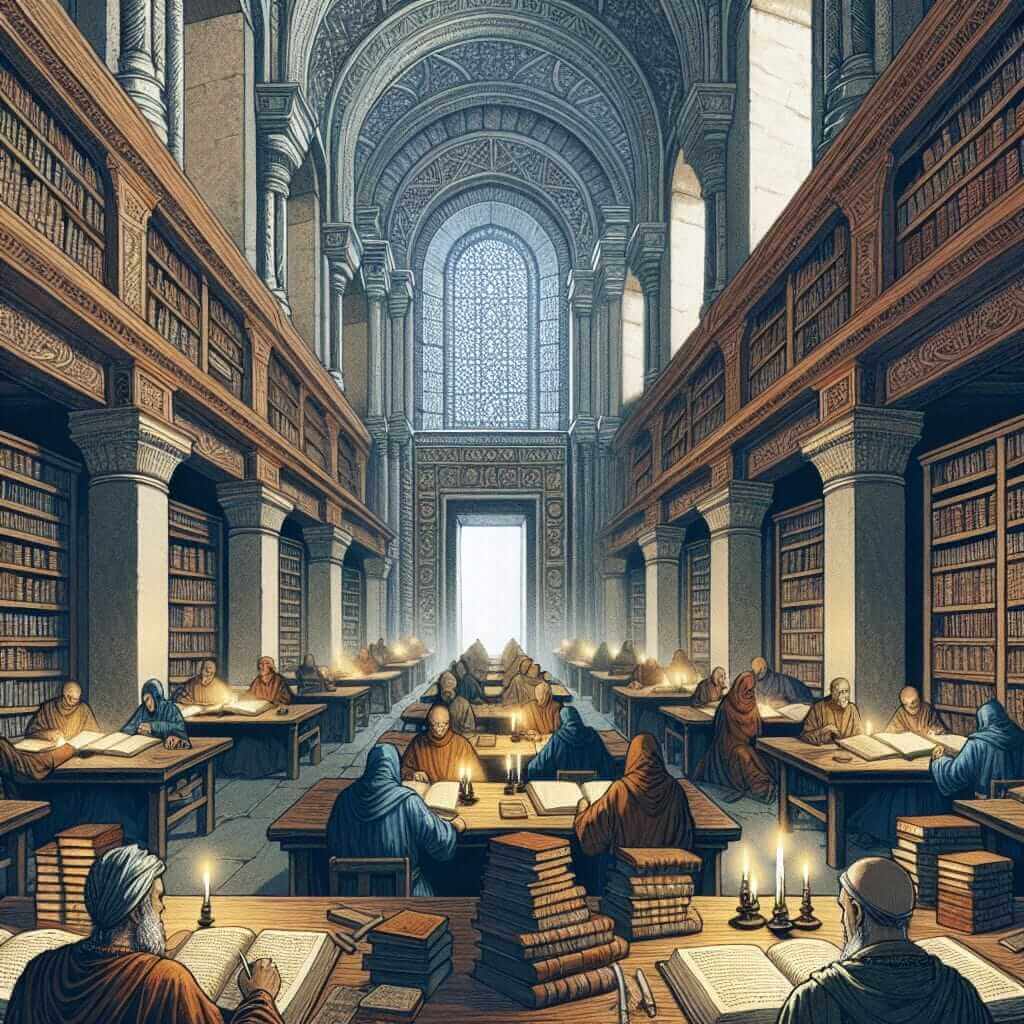The IELTS Reading section is designed to assess a candidate’s ability to comprehend and interpret written texts. Over the years, various themes have been recurrent in IELTS exams, and “Historical significance of ancient libraries” is one such topic that often appears due to its rich context and educational value. Therefore, understanding this theme can give you an edge in your preparations.
Ancient libraries played a pivotal role in preserving the knowledge and cultural heritage of civilizations. In this article, we provide a comprehensive IELTS Reading practice exercise focusing on this topic, including a reading passage, questions, answers, and detailed explanations.
Reading Passage: The Historical Significance of Ancient Libraries
Medium Text Level
The libraries of the ancient world were more than just repositories of information; they embodied the intellectual life of civilizations. Among the most renowned were the Library of Alexandria and the Library of Ashurbanipal. These institutions not only safeguarded countless scrolls and manuscripts but also served as centers for learning and scholarship.
The Library of Alexandria, founded in the early 3rd century BCE by Ptolemy I Soter, was the most famous library of antiquity. It is believed to have housed up to 700,000 scrolls covering a diverse array of subjects, from philosophy and science to literature and history. This library was a hub for prominent scholars, including Euclid, Archimedes, and Eratosthenes. Its destruction, traditionally attributed to a fire during Julius Caesar’s siege of Alexandria, marked a significant loss for human knowledge.
Another significant ancient library was the Library of Ashurbanipal, located in Nineveh, the capital of the Assyrian Empire. Established in the 7th century BCE by King Ashurbanipal, this library is renowned for its extensive collection of over 30,000 clay tablets written in cuneiform script. These tablets covered various topics such as religion, medicine, astronomy, and literature. The preservation of these texts has provided modern scholars valuable insights into Mesopotamian culture and knowledge.
These ancient libraries not only preserved writings but also fostered the growth of ideas and academic inquiry. They were the forerunners of modern libraries, laying the groundwork for the organization and dissemination of knowledge that we practice today.
Comprehension Questions
Multiple Choice Questions
-
The Library of Alexandria was founded by:
A. Julius Caesar
B. Euclid
C. Ptolemy I Soter
D. Ashurbanipal -
The Library of Ashurbanipal primarily contained texts written on:
A. Papyrus scrolls
B. Stone tablets
C. Clay tablets
D. Parchment paper -
The destruction of the Library of Alexandria is traditionally attributed to:
A. An earthquake
B. Julius Caesar’s siege
C. A flood
D. An invasion by the Assyrians
Identifying Information (True/False/Not Given)
- The Library of Alexandria housed up to 70,000 scrolls. (True/False/Not Given)
- Euclid, Archimedes, and Eratosthenes were scholars associated with the Library of Alexandria. (True/False/Not Given)
- The Library of Ashurbanipal was established in the 9th century BCE. (True/False/Not Given)
Summary Completion
Complete the summary using NO MORE THAN THREE words from the passage for each answer.
The Library of Alexandria, founded by __(7)__, was a significant center of learning, known for its extensive collection of up to __(8)__ scrolls. The library was home to scholars such as Euclid and __(9)__. Its eventual destruction marked a great loss to human knowledge. Meanwhile, the Library of Ashurbanipal, located in __(10)__, preserved over 30,000 __(11)__ tablets, providing insights into Mesopotamian culture.
Answer Keys and Explanations
-
C – Ptolemy I Soter
Explanation: The passage states that Ptolemy I Soter founded the Library of Alexandria. -
C – Clay tablets
Explanation: The passage mentions that the Library of Ashurbanipal contained clay tablets written in cuneiform. -
B – Julius Caesar’s siege
Explanation: The destruction of the Library of Alexandria is traditionally attributed to a fire during Julius Caesar’s siege. -
False
Explanation: The passage states that the Library of Alexandria housed up to 700,000 scrolls, not 70,000. -
True
Explanation: The passage lists Euclid, Archimedes, and Eratosthenes as scholars associated with the Library of Alexandria. -
Not Given
Explanation: The passage states that the Library of Ashurbanipal was established in the 7th century BCE, not the 9th.
Summary Completion Answers
- Ptolemy I Soter
- 700,000
- Archimedes
- Nineveh
- clay
Common Pitfalls and Vocabulary
When reading passages related to historical contexts, students often miss key dates and names. Always pay close attention to these details as they frequently feature in questions.
Vocabulary
- Repository (noun) /rɪˈpɒz.ɪ.tər.i/ – A place where things are stored.
- Manuscripts (noun) /ˈmæn.jə.skrɪpt/ – Handwritten texts.
- Cuneiform (noun) /ˈkjuː.nɪ.fɔːm/ – An ancient writing system used in Mesopotamia.
Grammar to Note
- Relative clauses: Pay attention to the use of “which,” “that,” and “who” in complex sentences.
Example: “The Library of Alexandria, which was founded by Ptolemy I Soter, was a center of learning.”
Advice for IELTS Reading Preparation
- Practice Regularly: Consistent practice helps in familiarizing yourself with different question types and text structures.
- Expand Your Vocabulary: Engage with a variety of texts to build a robust vocabulary.
- Time Management: Practice completing sections within the allotted time to improve your reading speed and efficiency.
- Analyze Mistakes: Review your mistakes to understand where you went wrong and to avoid similar errors in the future.
By focusing on the historical significance of ancient libraries and practicing with authentic passages and questions, you can enhance your reading comprehension and perform better in the IELTS Reading section.

For more insights on improving your IELTS Reading skills, you can explore our article on What Kinds of Places Are You Most Interested In?.
By incorporating historical themes in your preparation, you’ll not only find interesting content to engage with but also improve your vocabulary and understanding of complex texts. Good luck with your IELTS practice!